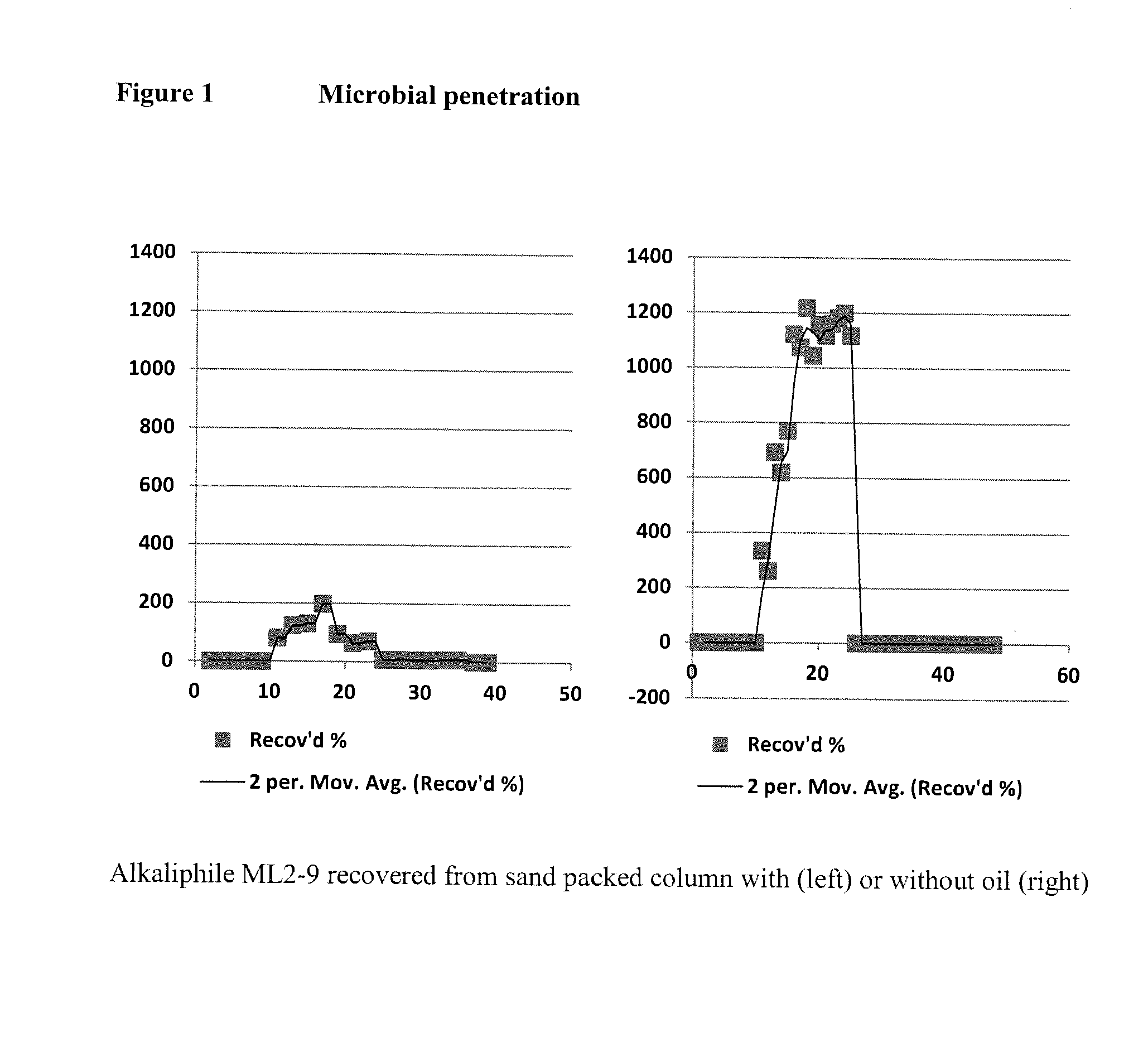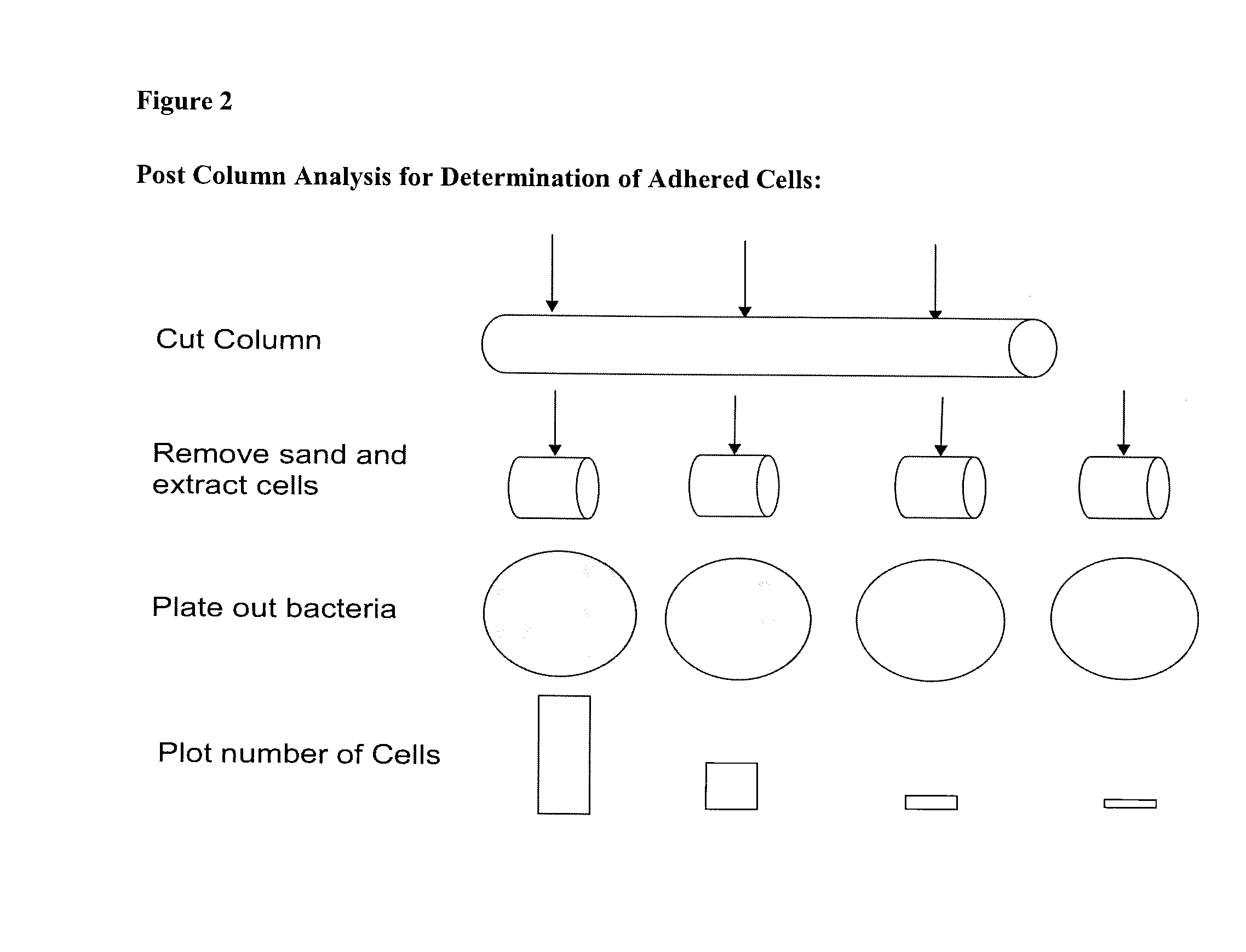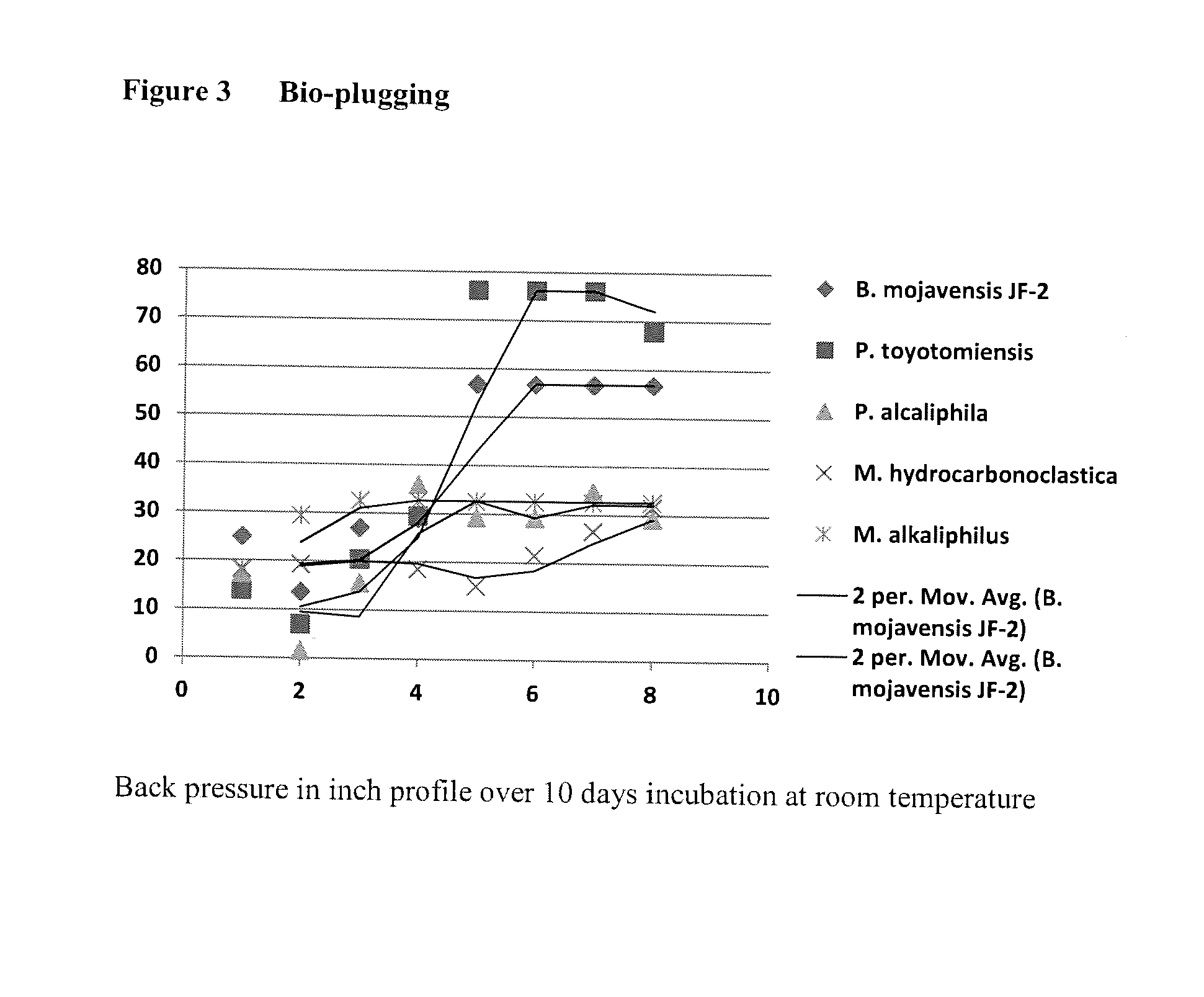Microbial enhanced oil recovery method
a technology of enhanced oil and drive fluid, which is applied in the direction of fluid removal, fermentation, borehole/well accessories, etc., can solve the problems of increasing the demand for imported oil, a dependence on foreign suppliers, and a process that takes millions of years, so as to increase the viscosity of the drive fluid
- Summary
- Abstract
- Description
- Claims
- Application Information
AI Technical Summary
Benefits of technology
Problems solved by technology
Method used
Image
Examples
example 1
Screening for Polymer Production
[0080]Plate assays are carried out for polymer production, in which cells are treated under mutagenic conditions, plated on rich agar plates, and incubated to allow colonies to form. Colonies are screened for a visible mucoid appearance. (as described in Mathee et al., 1999 Microbiology 145:1349-1357). In an earlier reference Darzins and Chakrabarty (1984) in J. Bacteriol Vol. 164 p 516-524 reported isolating 21 non-mucoid mutants of Pseudomonas aeruginosa strain 8821 by screening 4 thousand colonies that had been mutagenized with EMS. The non-mucoid producing mutants were recognized by their inability to produce a “typical mucoid colony” on solid media. The 21 colonies were tested by growth on a media with a simple carbohydrate as the only carbon source to make sure that the lack of alginate synthesis was not due to genes controlling all carbohydrate metabolisms. This lead to cloning the genes controlling alginate biosynthesis from mucoid cysitic fib...
example 2
Screening for Biofilm Forming Microorganisms with Glass Beads
[0082]Screening of isolated strains for their ability to form biofilms on silicate surfaces under aerobic and anaerobic conditions was disclosed by Keeler et al. in U.S. Pat. No. 8,357,526. Sterile glass beads (3 mm, #11-312A, Fisher Scientific, Hampton, N.H.) were placed into the wells of a 24-well microtiter plate. Aliquots (1.0 mL) of either the Injection Water or the PPGAS medium (20 mM NH. sub. 4Cl, 20 mM KCl, 120 mM Tris-Cl, 1.6 mM MgSO. sub. 4, 1% peptone, 0.5% glucose, pH 7.5) were added to each well. Samples (10 u. L) of overnight microbial cultures were then added, and the plates were incubated at room temperature for up to one week. Glass beads were examined by microscopy directly in the microtiter wells. To quantify the anaerobic formation of biofilms across different strains, single colony isolates were grown anaerobically in 1.0 mL Injection Water supplemented with 1600 ppm sodium nitrate. Silica beads were a...
example 3
Determination and Assay of Amount of Biofilm Formed
[0083]Biofilm formation in microtiter plates was determined essentially as described previously (O'Toole, G. A., and R. Kolter. 1998. Initiation of biofilm formation in Pseudomonas fluorescens WCS365 proceeds via multiple, convergent signalling pathways: a genetic analysis. Mol. Microbiol. 28:449-461). Cells were grown in liquid cultures in microtiter plates (0.2 ml) for 18 h in M9Glu / sup at 30° C. The liquid culture was removed, and the cell optical density at 600 nm (OD600) was determined spectrophotometrically. Cells attached to the microtiter plates were washed with 0.1 M phosphate buffer (pH 7.0) and then stained for 20 min with 1% crystal violet (CV) in ethanol. The stained biofilms were thoroughly washed with water and dried. CV staining was visually assessed, and the microtiter plates were scanned. For semiquantitative determination of biofilms, CV stained cells were resuspended in 0.2 ml of 70% ethanol, and their absorbance...
PUM
| Property | Measurement | Unit |
|---|---|---|
| time | aaaaa | aaaaa |
| time | aaaaa | aaaaa |
| pH | aaaaa | aaaaa |
Abstract
Description
Claims
Application Information
 Login to View More
Login to View More - R&D
- Intellectual Property
- Life Sciences
- Materials
- Tech Scout
- Unparalleled Data Quality
- Higher Quality Content
- 60% Fewer Hallucinations
Browse by: Latest US Patents, China's latest patents, Technical Efficacy Thesaurus, Application Domain, Technology Topic, Popular Technical Reports.
© 2025 PatSnap. All rights reserved.Legal|Privacy policy|Modern Slavery Act Transparency Statement|Sitemap|About US| Contact US: help@patsnap.com



